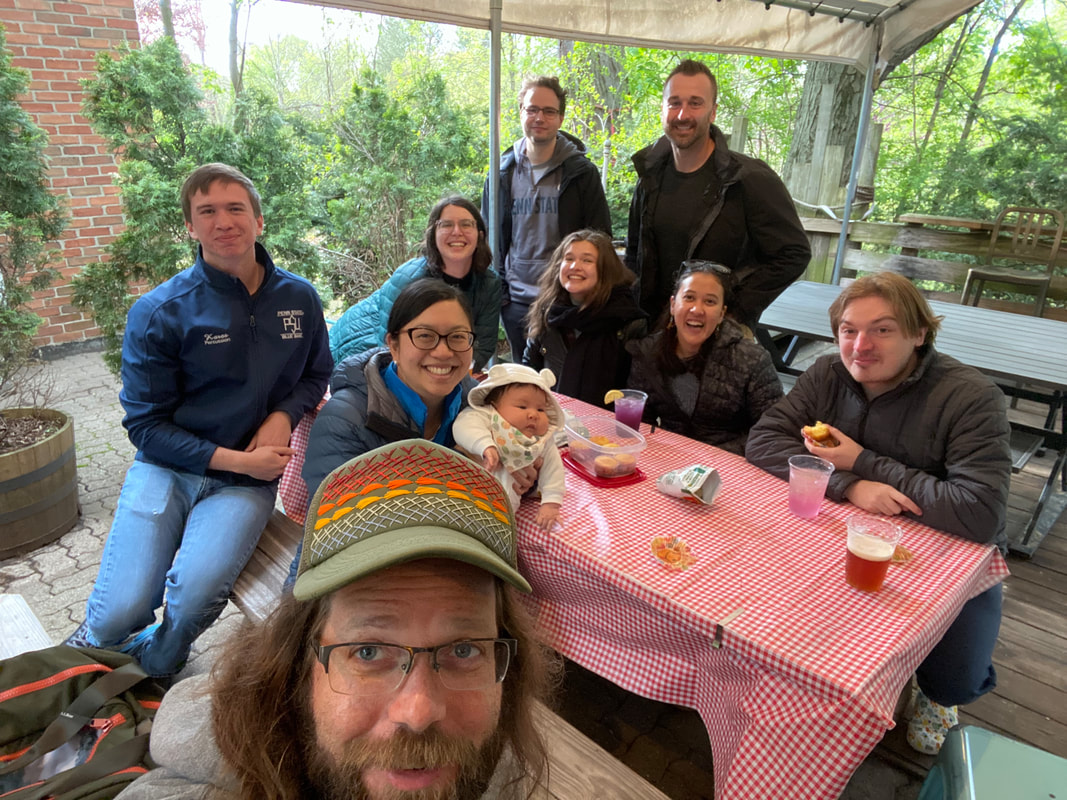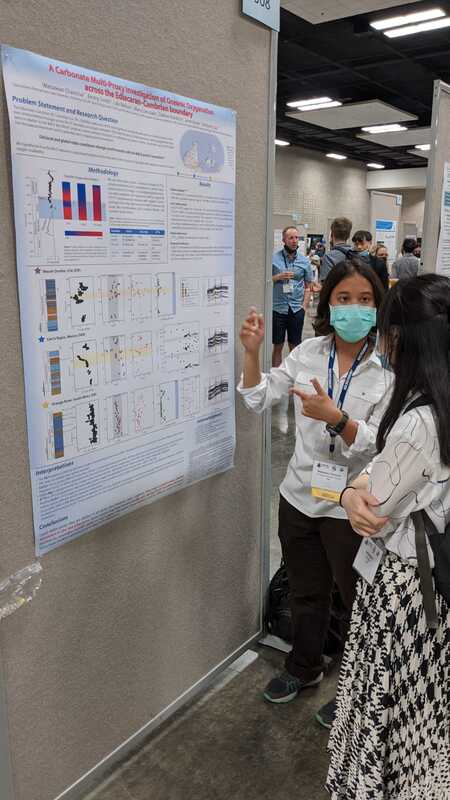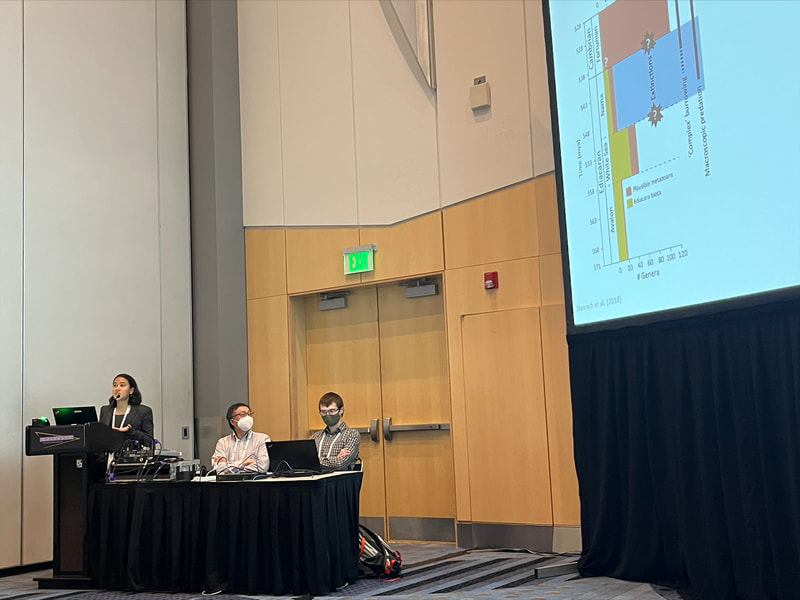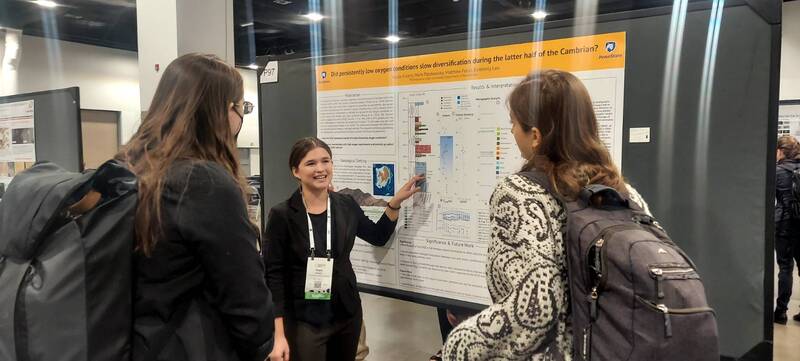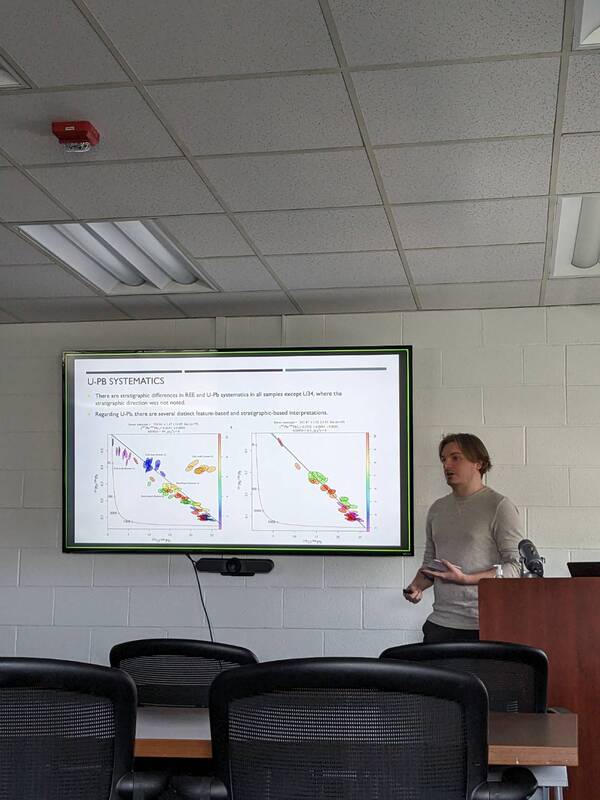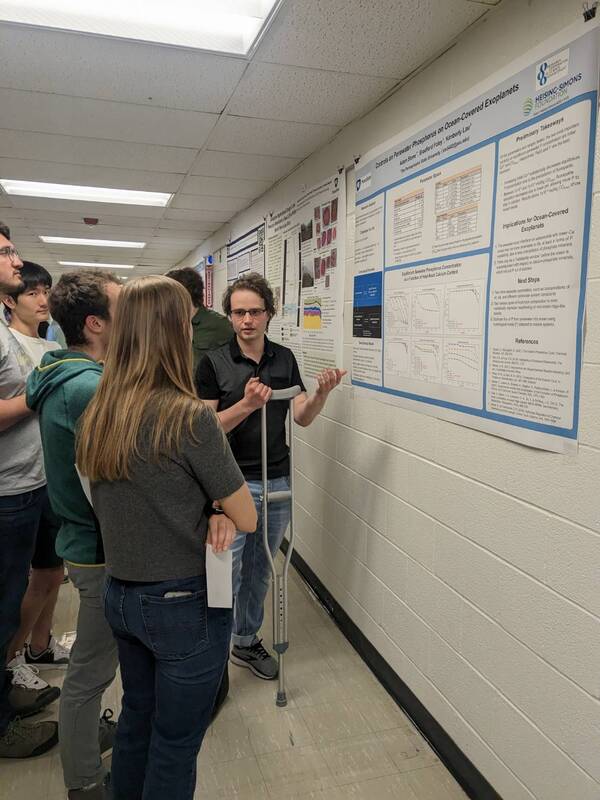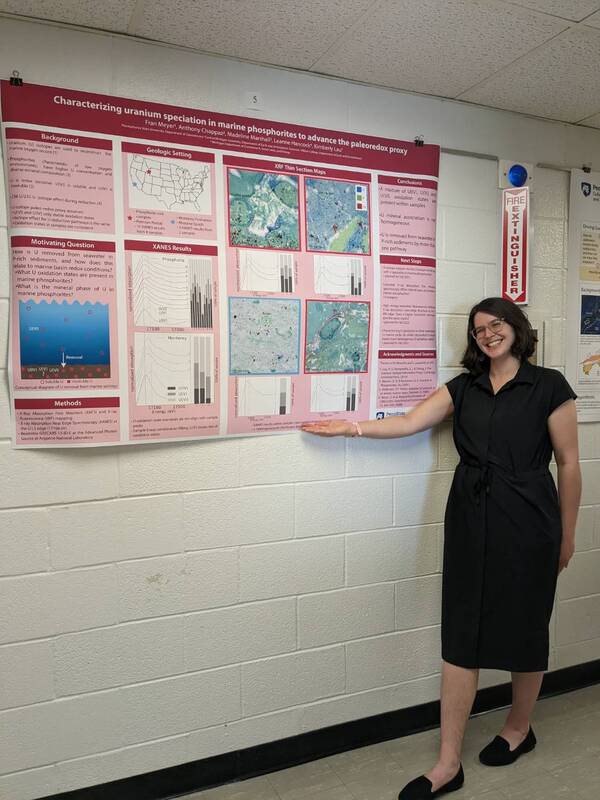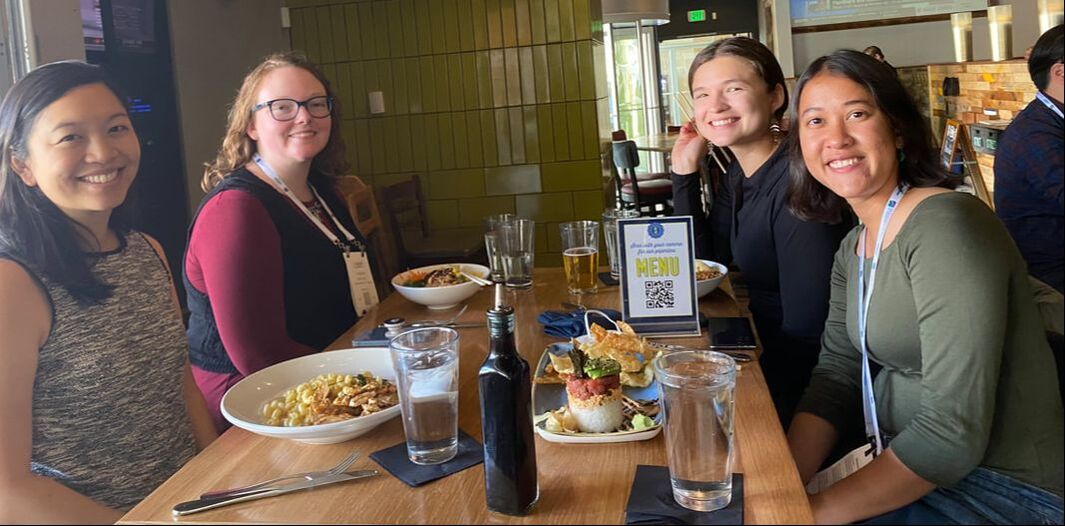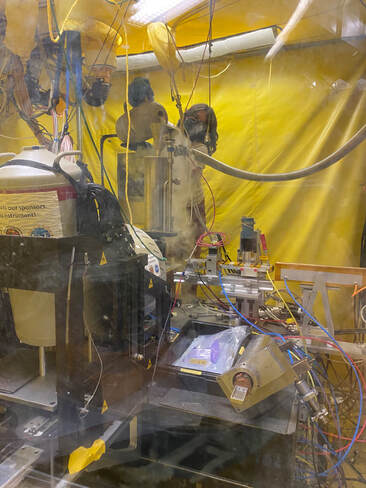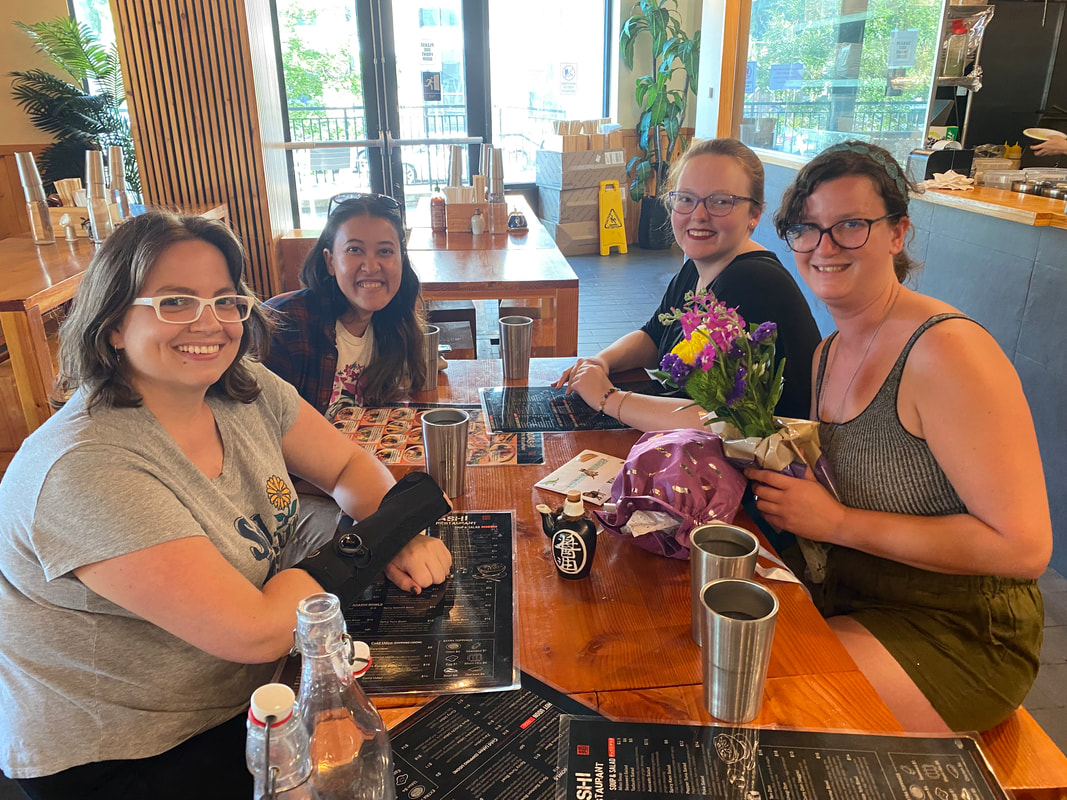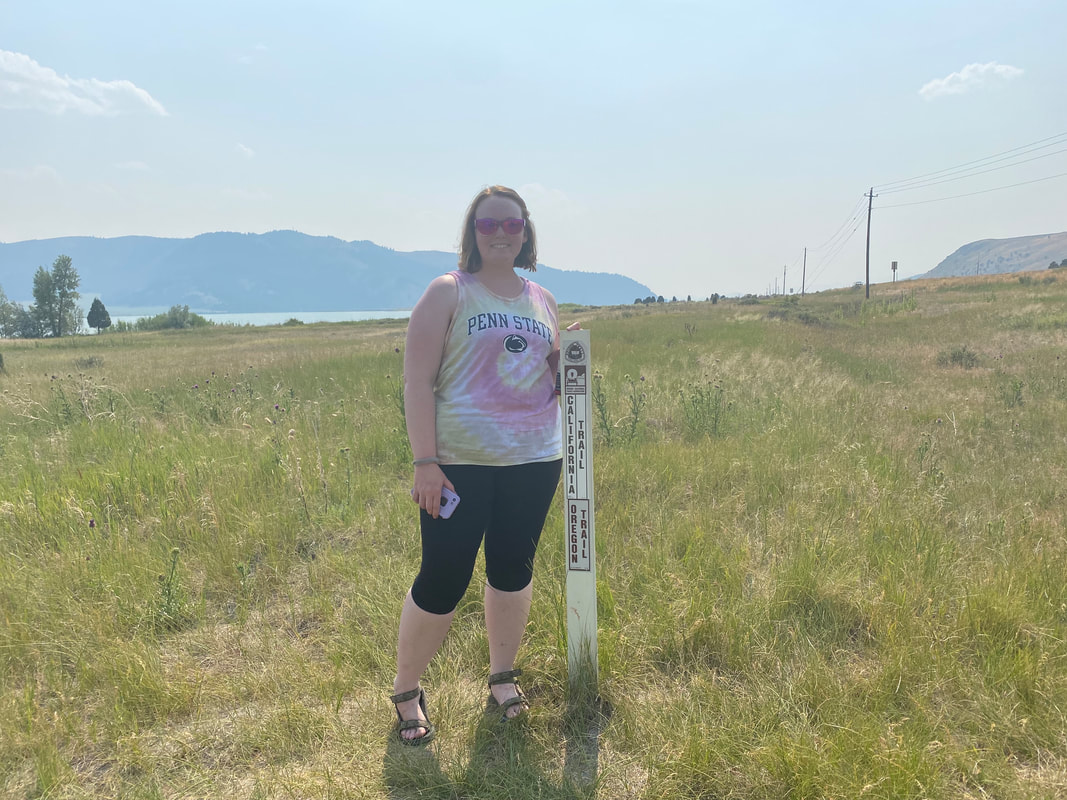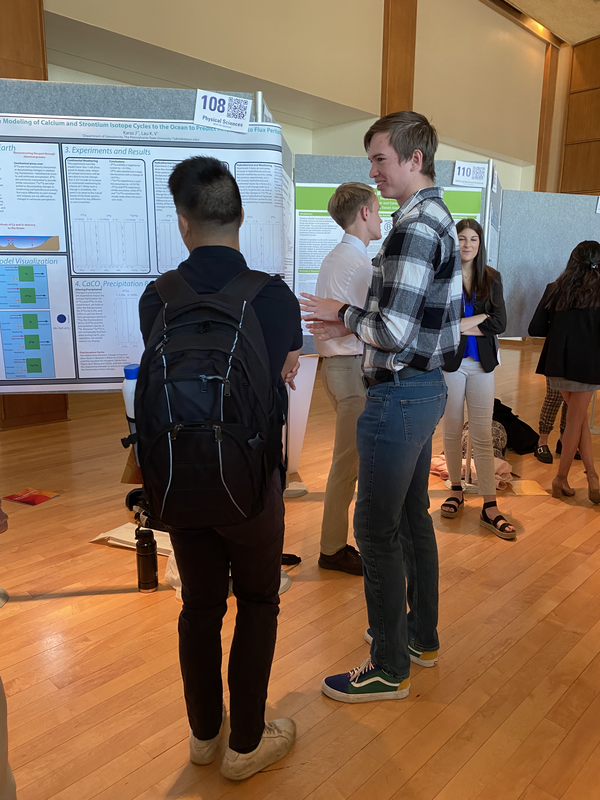|
Congrats to our wonderful undergraduate researchers, who had a super successful spring! Abigayle Ward graduated in December, 2022 and will be starting a PhD in soil science at the University of Connecticut. Joshua Karas graduated in May, 2023 and will be starting a position with Arcadis. Gabriel Felker successfully submitted and presented his senior thesis this spring and will be graduating at the end of the summer after field camp. Good luck to everyone, we'll miss you!
0 Comments
Congrats to Kayla Irizarry, PhD student, on passing her qualifying exam this spring! Additionally, Kayla was awarded a Ford Foundation Predoctoral Fellowship. We are so proud of Kayla!
(photo of Kim, Dr. Chelsie Bowman, Kayla, and Fai Chanchai at GSA in Denver in October, 2022) I am excited that Dr. Cole McCormick has joined our research group as a postdoctoral scholar. Cole comes to Penn State after completing his Ph.D. at the University of Manchester. He hails from Alberta, Canada, and received his B.S. and M.S. degrees from the University of Alberta. He will be leading a range of dolomite-based projects. Welcome, Cole!
Dalton Hardisty and I published a diagenetic modeling paper focusing on carbonated redox proxies. We examine how different styles of diagenesis impact U isotopes, CAS isotopes, the Ce anomaly, iodine-calcium ratios, and more. Check it out (open access!) in Geochimica et Cosmochimica Acta here.
I was also a co-author on two other mass extinction studies! - Congrats to Terry Isson for his work on the potential for reverse weathering to prolong Early Triassic warming following the end-Permian extinction in Science Advances. Read it here. - Congrats to Pulkit Singh for leading an integration of paleontological and I/Ca constraints following the end-Triassic extinction in Geobiology. Read it here. Congrats to Lucien Nana Yobo on his recent first authored publication!
LIP volcanism (not anoxia) tracked by Cr isotopes during Ocean Anoxic Event 2 in the proto-North Atlantic region in Geochimica et Cosmochimica Acta Kaitlin Taylor successfully defended her M.S. thesis and is on a new adventure as a chemist in a pharmaceutical company in her home state of Connecticut.
Chelsie Bowman accepted a Visiting Assistant Professorship at Georgia Southern University and is excited to return to the south to teach geology lectures and labs. Congrats and good luck to you both!
Congratulations to Stanford MS student Michael Pimentel-Galvan for the publication of his paper, Duration and Intensity of End-Permian Marine Anoxia, in Geochemistry, Geophysics, Geosystems! Michael revisited modeling of the U isotope and concentration records using a Monte Carlo scheme over a range of parameter values, evaluating the model runs using PCA.
Please see the paper here: https://doi.org/10.1029/2021GC010130 |
Archives
May 2023
|
